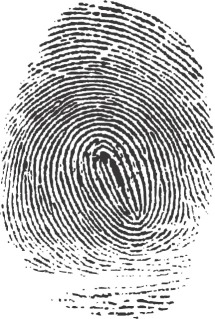Genome:
- 3 Gbps
- 20k genes
- 37.2 trillion cells[ref]
wget ftp://ftp.ncbi.nlm.nih.gov/refseq/H_sapiens/annotation/GRCh38_latest/refseq_identifiers/GRCh38_latest_genomic.fna.gz
gunzip --keep GRCh38_latest_genomic.fna.gzThe key cladograms:
- Hominoidea level for extant species separation
- Australopithecine level for extinct species separation: en.wikipedia.org/w/index.php?title=Homo&oldid=1155900663#Phylogeny
How Humans Lost Their Fur by PBS Eons (2020)
Source. Says it is linked to bipedalism to help hunting in hot weather. But could only happen fully after the invention of fire, otherwise you'd be too cold at night. Tagged
Frozen and cut on Microtome at 1mm intervals.
Tagged
They actually use fingerprint minutiae, not raw images, which is cool.
Bibliography:
- stackoverflow.com/questions/37147480/convert-fingerprint-bitmap-to-iso-iec-19794-2-template
- stackoverflow.com/questions/33412977/how-to-convert-a-byte-array-of-fingerprint-image-to-iso-19794-2-in-java-basica
- stackoverflow.com/questions/43937986/convert-png-image-fingerprint-to-minutiae-xyt-fingerprint-format
Bibliography:
Possibly not made not possible from userland due to privacy issues. Apparently not even kernelland can see it, only
Bibliography:
- Stack Overflow:
- stackoverflow.com/questions/35934729/capture-fingerprint-from-smartphone-and-save-to-a-file
- stackoverflow.com/questions/63257762/how-to-save-and-compare-2-fingerprints-on-android
- stackoverflow.com/questions/67104186/can-we-use-android-fingerprint-scanner-to-get-finger-pattern-and-store-that-patt
- stackoverflow.com/questions/41632225/android-where-and-how-securely-is-fingerprint-information-stored-in-a-device
- android.stackexchange.com/questions/161780/where-does-android-store-fingerprint-data
- Reddit:
The point of these is that they are good for transfection apparently.
Tagged
20k genes, 3 billion base pairs. We can handle this!!!
Tagged
This is really cool. Ciro Santilli would be tempted to participate, but his wife is not a fan, in part due to the loss of privacy of children. Maybe she is right...
Someone should implement a version of that where you can upload your privately sequenced genome and get analytics for free.
This was the first large part of the genome that was sequenced, in 1981: Cambridge Reference Sequence. Presumably they picked it because it is short and does not undergo crossover.
About 16.6 kbp:
- 13 coding genes
- 24 non-coding genes
TODO: many places say "exactly" 16,569, it seems that variable number tandem repeat are either rare or don't occur!
- pubmed.ncbi.nlm.nih.gov/2881260/ 1989 reports a single length polymorphism
By Fred Sanger's group.
Tagged
As mentioned by Craig Venter in 100 Greatest Discoveries by the Discovery Channel (2004-2005), the main outcomes of the project were:
- it established the ballpark number of human genes
- showed that human genomes are very similar across individuals.
Important predecessors:
This was one of the first notable country-led large scale sequencing efforts of the world.
Sample paper: www.nature.com/articles/ng.3247
UniProt human: www.uniprot.org/uniprot/Q9BYF1 It is interesting to see in the Mutagenesis how many known mutations can increase or decrease SARS-CoV-2 S protein binding affinity.
Tagged
Tagged
Ancestors
- Australopithecine
- Ape subclade
- Ape
- Simian subclade
- Simian
- Primate subclade
- Primate
- Euarchontoglires subclade
- Euarchontoglires
- Placentalia subclade
- Placentalia
- Theria subclade
- Theria
- Mammal subclade
- Mammal
- Synapsid subclade
- Synapsid
- Amniote subclade
- Amniote
- Tetrapod subclade
- Tetrapod
- Fish subclade
- Fish
- Vertebrate
- Chordate subclade
- Chordate
- Animal subclade
- Animal
- Eukarya subclade
- Eukaryote
- Species
- Taxonomy
- Biology
- Natural science
- Science
- Home
Incoming links
- Angiotensin-converting enzyme 2
- Australopithecine
- Ciro Santilli
- Key mitochondrial proteins aren't necessarily in mtDNA
- Microscopy connectome extraction
- Myoglobin
- Paleolithic
- Roche Biochemical Pathways
- Ron Maimon
- Sugar
- System (anatomy)
- Why Ciro Santilli uses excessive amounts of links even to things everyone knows what they are
 Ciro Santilli
Ciro Santilli OurBigBook.com
OurBigBook.com

